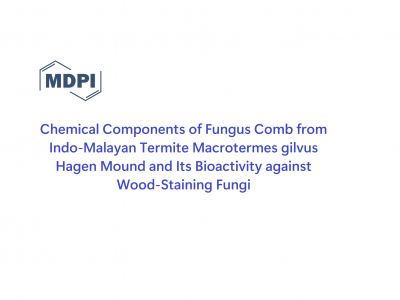
Artikel
- Sort by :
- Subcategory /
- Date

A rare case: Vesicoureteral reflux in Indonesian young adult with neurogenic bladder and chronic kidney disease stage 4
- Artikel Ilmiah
- /
- 28/01/2022
Abstract Background: Vesicoureteral reflux (VUR) is one of the main causes of chronic kidney disease (CKD) in adolescence and young adult. It can be a congenital or an acquired anomaly and its uncommon in adult life.Case presentation: A 19th years old male with neurogenic bladder, VUR grade 4, CKD stage 4, malnutrition, and short stature. Radiological examinations show a spastic neurogenic bladder, cystitis, right VUR grade 4. Abdominal ultrasonography (USG) results were bilateral severe hydronephrosis due to post-renal causes. This patient had a history of myelocele excision at the age of 1.5 years. He had recurrent urinary tract infection with CKD stage 4.Discussion: The diagnosis of VUR and neurogenic bladder in CKD stage 4 is a rare case in nephrology.Conclusion: Indonesian male confirms of diagnosis VUR grade 4, neurogenic bladder, and CKD stage 4.Keywords: Vesicoureteral reflux, Neurogenic bladder, Chronic kidney disease

Mesenchymal Stem Cell Senescence and Osteogenesis
- Artikel Ilmiah
- /
- 30/01/2022
AbstractMesenchymal stem cells (MSCs) are stem cells with the potential ability to differentiate into various cells and the ability to self-renew and resemble fibroblasts. These cells can adhere to plastic to facilitate the culture process. MSCs can be used in research into tissue biotechnology and rejuvenation medicine. MSCs are also beneficial in recipient tissue and differentiate as a breakthrough strategy through paracrine activity. Many databases have shown MSC-based treatment can be beneficial in the reduction of osteogenesis induced by senescence. In this article, we will discuss the potential effect of MSCs in senescence cells related to osteogenesis. Keywords: cellular senescence; mesenchymal stem cells; MSCs senescence; osteogenesis

Chemical Components of Fungus Comb from Indo-Malayan Termite Macrotermes gilvus Hagen Mound and Its Bioactivity against Wood-Staining Fungi
- Artikel Ilmiah
- /
- 01/02/2022
Abstract Recently, the architectural and physical properties of the fungus comb from subterranean termite Macrotermes gilvus Hagen (Isoptera: Termitidae) mounds had been studied and it is important to determine its chemical profile as well as to evaluate its anti-staining-fungi activity. The results showed that fungus comb of M. gilvus has a high crude ash (30.57%), fiber (25.46%), starch (7.76%), protein (5.80%, 5.53% amino acid), acid-insoluble ash (3.45%), and fat (0.73%). It also contained phenol hydroquinone, steroids, terpenoids, and saponin compounds. Seventeen amino acids were identified via high-performance liquid chromatography analysis, of which arginine, leucine, glutamate, and aspartic acid were the majority. According to gas chromatography-mass spectrometry analysis, the n-hexane extract consists of several types of fatty acid derivatives. Meanwhile, the ethyl acetate (EtOAc) extracts were primarily phenol groups with 1,2,3-propanetriol (glycerol) at the highest relative concentration.

Severe Covid-19 infection in a kidney transplant recipient treated with lopinavir/ritonavir, hydroxychloroquine and dexamethasone
- Artikel Ilmiah
- /
- 09/03/2022
Abstract Severe COVID-19 infection management for a recipient of kidney transplant has debatable prognosis and treatment. We described the case of a COVID-19 infected 70 year old female, previously had renal transplantation in 2017. The patient took immunosuppressive agents as routine drugs for transplant recipient status and received lopinavir/ritonavir, hydroxychloroquine, and dexamethasone daily at the hospitalization. Specific question arises about renal transplant recipients being infected by COVID-19 - whether the infection will get worse compared to those without immunosuppresive agent. In this case, author decided to stop the immunosuppressive agent followed administration of combination lopinavir/ritonavir, hydroxychloroquine, and dexamethasone that gives a good clinical impact change to patient's condition after once getting worsened and mechanically ventilated.

Infrapatellar Fat Pad-Derived Mesenchymal Stem Cells as an Alternative Cell Source for Cell-based Osteoarthritis Treatment
- Artikel Ilmiah
- /
- 11/03/2022
A Systematic Review on Preclinical and Clinical Evidence ABSTRACT Introduction: There is still no definitive treatment to either inhibit the degradation process or restore the damaged cartilage in osteoarthritis (OA). Various cell sources have been studied and in vitro studies showed that infrapatellar fat pad-derived mesenchymal stem cells (IFPDMSCs) exhibit higher chondrogenic potential than other adipose-derived cells. Still, very few in vivo studies on IFPDMSCs for cartilage healing in OA have been reported. Aims: This systematic review will analyze the therapeutic potential of IFPDMSCs for cartilage healing in osteoarthritis from preclinical and clinical studies. Design, Methods, and Data Source: Using the PubMed, EMBASE, and Cochrane Library database up to November 30, 2020, a systematic review according to PRISMA reporting guideline was conducted on IFPDMSCs application to treat osteoarthritis in vivo studies. Inclusion criteria were in vivo preclinical and clinical studies from January 2010 to November 2020 involving the OA model or cases using IFPDMSCs to promote healing.